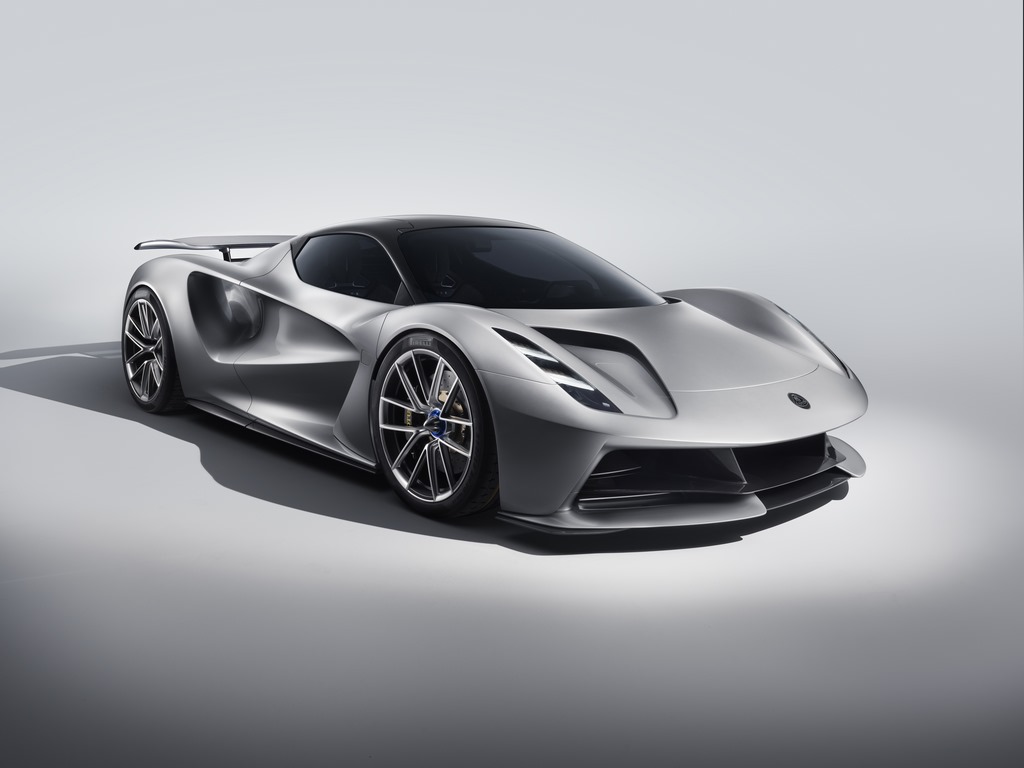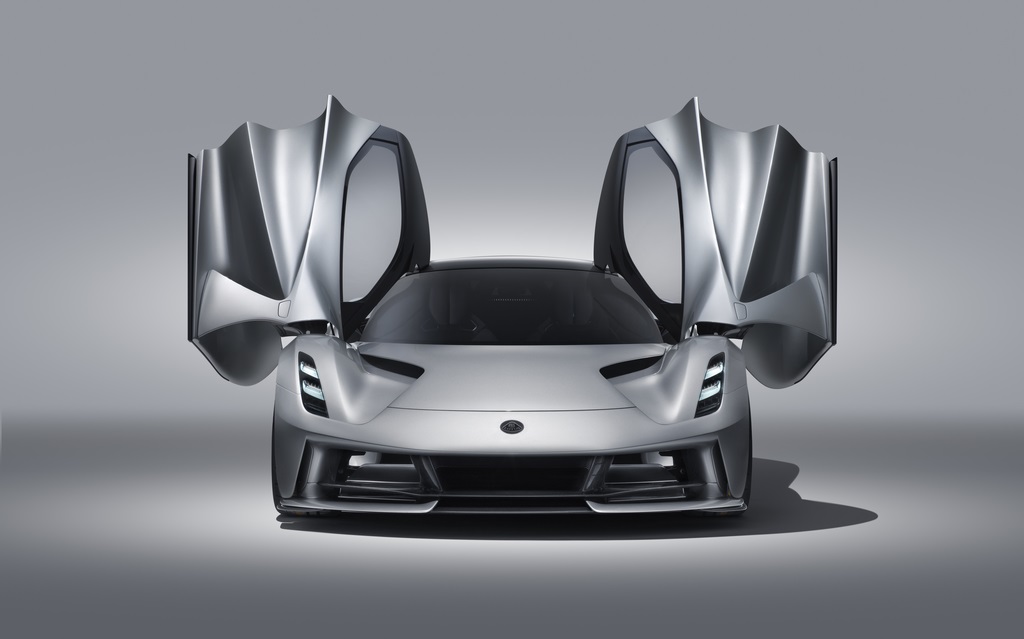The ridiculous 2000 PS hypercar – The Lotus Evija.

2019 has been the year of hypercars, there are hypercars from almost each and every automotive giant, and even the boutique manufacturers. To name some, we have witnessed the launch of Jesko from Koenigsegg, Battista from the Italian design house Pininfarina, Huayra Roadster BC from Pagani, Chiron Sport 110 ans from Bugatti and a lot more, the list goes on and on. But one manufacturer which nobody expected to launch a hypercar, surprised the world with the launch of its all-electric hypercar with the numbers and design that blew everyone’s mind. This is the Lotus Evija.
The first British all-electric hypercar Lotus Evija came out of nowhere to the hypercar scene and baffled everyone. Before you wonder, the name is pronounced as “E-vi-ya” which means “the first in existence” or “the living one”. The British automaker after being owned and revived by the Chinese automotive giant Geely is moving towards a vivid future, with the first step being the launch of this exquisite performance machine. The Evija looks gleaming and sumptuous from the outside but underneath that aesthetically pleasing carbon fibre body, lies the powerhouse of this beast. This is the most powerful car ever to enter production with 2000 PS (yes, you read that right) with also being the lightest EV hypercar in the market with the kerb weight of only 1680 kgs.

In the true hypercar fashion, exclusivity and desirability go hand in hand, thus the production number on this beauty is limited to 130, as 130 pays tribute to the project code of the Evija. With exclusivity comes a hefty price tag, and that is $2.1 million for the Evija, also that price could be easily bumped a little more with options, taxes and duties.
The Meticulous Exterior
The Evija has been designed with the philosophy that form and function can work perfectly in tandem, and that is evident from each and every angle of this stunning machine. The front is designed in three sections, the larger central area provides air to cool the battery pack – mid-mounted behind the two seats – while the air channelled through the two smaller outer sections cools the front e-axle. Lotus aficionados may notice a respectful nod to the iconic Type 72 Formula 1 car, with its square front central section and two side wings. The aerodynamics of the Evija is inspired by nature, aeronautics industry and LeMans race cars. Evija amalgamates the sharp lines with smooth body panels along with those Venturi tunnels in the rear wheel arches and aggressive rear diffuser. All these work in harmony to create a car that is aerodynamically superior to its rivals.
The Exquisite Interior
The interior of the Evija is designed to complement the exterior. Inspired by the technical precision of race car engineering, the dominant characteristic of the cabin is the ‘floating wing’ dashboard which can be glimpsed from outside through the windscreen. The interior is finished with the highest quality of materials which have been handcrafted for the achievement of perfect appearance. The inspiration from Formula 1 can be seen in the dashboard and on the steering wheel, use of carbon fiber, Alcantara and thin metals accentuates the feeling of being lightweight.
Technical Advancements And Specifications
The Evija is powered by a 70 kWh battery pack developed in conjunction with Williams Advanced Engineering, with electric motors supplied by Integral Powertrain. Each of the four individual motors are placed at the wheels and are rated at 500 PS for a combined total output of 2000 PS and 1700 Nm of torque.
The Evija is equipped with magnesium wheels with diameters of 20-inch at the front and 21-inch at the rear. The car uses Pirelli Trofeo R tyres and AP racing carbon-ceramic disc brakes.
Not only does the Lotus Evija feature the world’s most powerful automotive drivetrain, it also boasts the world’s fastest charging battery. Thanks to the partnership with Williams Advanced Engineering, the battery has the ability to accept an 800kW charge. Using existing charging technology – such as a 350kW unit, which is currently the most powerful available – the Evija’s charge time will be 12 mins to 80% and 18 mins to 100%. The car’s range is 400 kms on the WLTP Combined Cycle.
This is the latest and greatest car from Lotus under the revival by the Chinese automaker Geely. And it provides an insight to the future of the British manufacturer as it is the halo car. We shall be seeing more of the technology trickling down to the other products of the brand. We hope that we can see similar design and technology for future production models from the company.
Lotus Evija
– The all-electric hypercar is priced at $2.1 million
– The production will start in 2020
– The Evija’s charge time will be 12 mins to 80% and 18 mins to 100%




